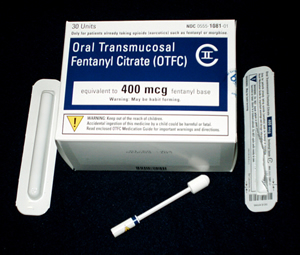Fentanyl Detox
What is Fentanyl?
Fentanyl is a synthetic narcotic that is generally used to treat severe and chronic pain or acute pain resulting from surgery. More potent than morphine, Fentanyl is sometimes prescribed to patients who have developed a tolerance to other opiate pain relievers. Fentanyl detox is usually given by injection, but also comes in the form of a patch or lozenge.
Like many other prescription drugs, Fentanyl can be found on the street and is widely used for recreational purposes. When misused, Fentanyl produces a high similar to heroin, but with a stronger sedative effect. Fentanyl is sold on the streets in powder form that is created in illegal laboratories or in the form of a patch where the gel containing the drug is either ingested or smoked. Street names for Fentanyl include Apache, China girl, Goodfella, Jackpot, TNT, and Tango and Cash. Heroin mixed with Fentanyl is sold as Magic or The Bomb
Fentanyl Withdrawal Symptoms
Fentanyl, like other opiates such as heroin, morphine, or vicodin, is an extremely physically and psychologically addictive drug. Someone abusing Fentanyl can face several uncomfortable withdrawal symptoms if they abruptly stop using the drug. The length and severity of symptoms vary depending on the severity of the addiction.
Common Fentanyl withdrawal symptoms include:
- Abdominal cramping
- Nausea and/or vomiting
- Anxiety, depression, and/or irritability
- Loss of appetite
- Confusion
- Muscle aches and/or tremors
- Hot flashes
- Excessive sweating
- Irregular breathing and/or heart rate
Fentanyl Detox
The first step for Fentanyl detox is an initial meeting with a medical detox professional usually at some type of detox clinic specializes in opiate abuse. Once specifics about the patient’s addiction history and medical history have been addressed, the patient will then begin to discuss different treatment options available to them.
The second step for Fentanyl detox is the actual detoxification process itself. Medical detox is generally recommended for addiction to powerful opiates such as Fentanyl. In this step, the patient is given opiate withdrawal medication to help ease the severity of the withdrawal symptoms, making the detox process more bearable.
 After the initial detoxification process, many patients will opt for drug replacement therapy. Drug replacement therapy helps curb the cravings for Fentanyl by filling the opioid receptors in the brain with a replacement medication that does not deliver a “high”. Replacement medications such as Suboxone have been shown to dramatically increase an addict’s success rate. In addition to replacement medications, patients will also receive individual counseling sessions to identify the physical and emotional triggers that might have led to their addiction, as well as learning coping strategies to help deal with life without Fentanyl.
After the initial detoxification process, many patients will opt for drug replacement therapy. Drug replacement therapy helps curb the cravings for Fentanyl by filling the opioid receptors in the brain with a replacement medication that does not deliver a “high”. Replacement medications such as Suboxone have been shown to dramatically increase an addict’s success rate. In addition to replacement medications, patients will also receive individual counseling sessions to identify the physical and emotional triggers that might have led to their addiction, as well as learning coping strategies to help deal with life without Fentanyl.
The final step is to devise an after care plan in conjunction with the counselor. Some options including aftercare at a sober living facility, outpatient therapy, group support, or any combination of the three. It is important to remember that a well suited after care plan greatly increases the chance of maintaining sobriety over the long-term.





